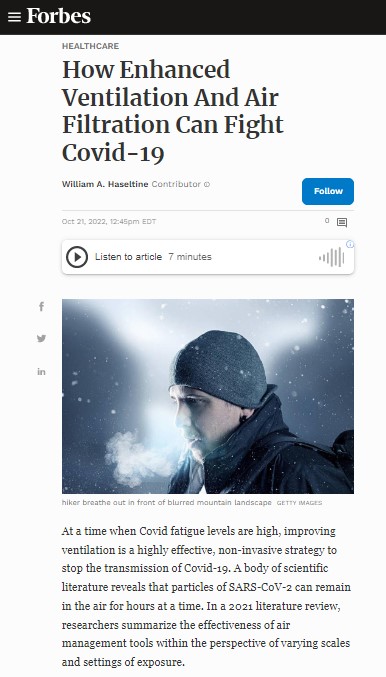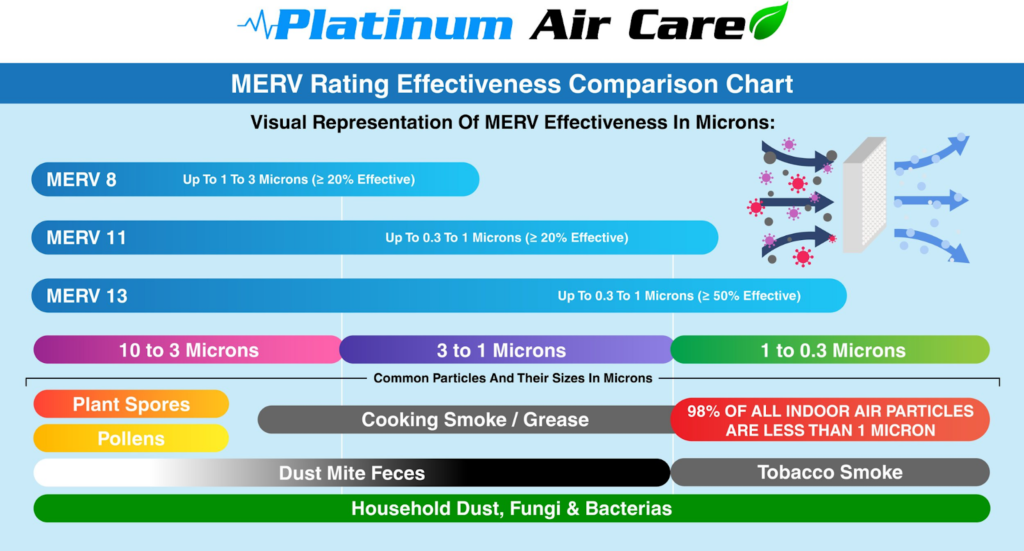How Enhanced Ventilation And Air Filtration Can Fight Covid-19
(Posted on Friday, October 21, 2022)

At a time when Covid fatigue levels are high, improving ventilation is a highly effective, non-invasive strategy to stop the transmission of Covid-19. A body of scientific literature reveals that particles of SARS-CoV-2 can remain in the air for hours at a time. In a 2021 literature review, researchers summarize the effectiveness of air management tools within the perspective of varying scales and settings of exposure.
Covid-19 Particles in the Area: How BIG or small are they?
How covid-19 particles originate affects their size and momentum in the air. Particles can be released by the force of speaking, coughing, or even breathing. In a 2022 study investigating how airborne SARS-CoV-2 particles travel, researchers studied the viral amounts within fine and coarse respiratory droplets produced in breathing, talking, and singing. They found that 59% of their participants released detectable levels of SARS-CoV-2 RNA in respiratory aerosols, with greater levels recorded from talking or singing samples. Fine-sized particles (≤5 µm) contributed to 85% of the viral loads found. Further, this suggests that fine covid-19 particles are catapulted in the air by force necessary to vocalize and are able to travel more deeply into the lungs due to their size.
Air management to control Covid-19 transmission can be accomplished in several ways:
Ventilation:
Ventilation can increase air exchange and directional airflow, lowering the risk of covid-19 exposure. In conditions where “natural” ventilation, or access to the outdoors, is not possible, proper ventilation can dilute (if not effectively redirect) contaminated air in indoor settings. A number of studies have demonstrated a statistically significant increased risk of infection in poorly ventilated areas compared to well-ventilated conditions.

MERV Rating Effectiveness, courtesy of Platinum Air Care
In a separate literature review, researchers also highlighted the association between improved ventilation and student performance. A body of literature has shown a reduction in health effects and student absences associated with increased ventilation rates. Although improved ventilation causes an increase in energy consumption, the net annual costs are estimated to be less than .1% of the typical public spending on primary and secondary education in the United States (Fisk et al, 2017). The total expense of improving ventilation, further, is a minor consequence compared to the benefits provided.
Filtration
Filtration has shown to be very effective in removing respiratory aerosols, minimizing exposure and infection risk. Products as affordable as MERV 13 filters are reported to capture at least 50% of .3 to 1um, 85% of 1-3 um and 90% of 3-10 um particles (Mesquita et al, 2021). In cases where covid-19 particles are on a super micron scale, MERV 11 provides comparable filtration efficiency with lower air flow resistance, requiring less energy. MERV filter ratings 13 and above are certified to capture submicron particles, which can be beneficial even in spacious settings.
A growing number of publications have shown quality filtration systems in schools and hospitals have effectively decreased airborne particles. One study found a 95% reduction in particles sized 0.01-10 um after 37 minutes of four portable HEPA cleaners in an active, relatively large classroom setting.. Teachers and students that were involved reported little disturbance by the noise of the commercial air cleaners. In clinical settings, where it is very important to circulate clean air, studies have shown that air filtration systems are effective in removing covid-19 particles as well other harmful airborne particles, like influenza or dust.
Far UVC light
Ultraviolet C-radiation light has been used for decades among scientists to quickly destroy microorganisms, including bacteria and viruses, to sterilize their benchwork. It involves using high energy, short wavelength radiation to effectively damage the genetic material found in the organisms neutralizing them. Studies have shown that far ultraviolet C-radiation lamps within exposure can have strong efficacy rates and work well against variants of covid-19, influence, and other drug-resistant bacteria without harming humans. Installing some lamps on walls or ceilings can irradiate the upper half of an indoor space, thereby disinfecting the air within the proper limitations that can later be recirculated through fans or ventilation systems.
One study has actually shown that installing UVC light in three distinct climates reduced air concentration of pathogens within a range of 50%-70%. As air temperature and air velocity play a role in UVC light effectiveness, there was a median percentage of 65% in the reduction of airborne particles when focusing on the different environments of Houston, Los Angeles, and New York. This suggests that UVC light systems are comparable to filtration systems and effective in a wide spectrum of environments.
A Call to Action
Governments worldwide have heavily invested efforts in food safety, sanitation, and drinking water for the sake of public health. It is time we give the same priority to achieving clean, pathogen-free air in buildings and indoor public spaces. Many critics of such a policy will cite significant costs as a barrier, However, the economic losses of even an average flu season cost the United States $11.2 billion, primarily due to reductions in productivity and absenteeism. The total cost of the Covid-19 pandemic in 2020 was estimated to be at more than $16 trillion, or approximately 90% of the annual gross domestic product of the US in October 2020. The costs will only continue to grow. It is in the best interest of our children, adults, and future generation to invest in quality air management tools now.
The goal should be the explicit inclusion of protection against indoor air hazards (including airborne infection control) in the statements of purpose and definitions of all relevant building design and engineering standards, regulations, and codes. Comprehensive ventilation standards must be developed by professional engineering bodies. New approaches must be developed to encourage the implementation of standards, one option is implementing “ventilation certificates” similar to food hygiene certifications for restaurants.
Like many other issues of public health, the Covid-19 pandemic has highlighted the desperate need to prioritize air quality in indoor spaces.
Read the original article on Forbes.

